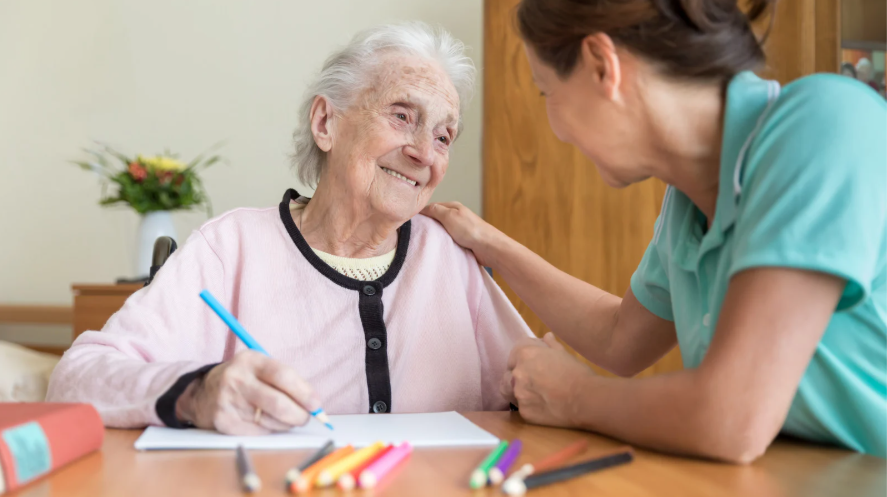Life’s challenges can make even the simplest tasks feel overwhelming—whether it’s brushing your hair, writing your name, or remembering your to-do list. That’s where Occupational Therapy (OT) steps in. Far from being just a clinical intervention, OT is a pathway to restored independence, renewed purpose, and improved quality of life.
In this guide, we’ll explore the benefits of Occupational Therapy for everyday living—and how it can empower people of all ages to regain control, confidence, and capability in their day-to-day routines. From children with autism to seniors struggling with mobility, OT helps real people overcome real obstacles.
What Is Occupational Therapy?

Occupational Therapy (OT) is a client-centered health profession that helps individuals perform daily tasks more independently and successfully. These tasks—or “occupations”—range from basic self-care like dressing and grooming to more complex activities like cooking, working, learning, and socializing.
OT bridges the gap between medical recovery and functional living. Unlike physical therapy, which emphasizes strength and movement, occupational therapy focuses on the practical activities that make life meaningful and manageable.
Who Can Benefit from Occupational Therapy?

The beauty of OT is its versatility. It helps people of all ages, backgrounds, and conditions. You or a loved one may benefit from OT if you fall into any of these categories:
- Children with developmental delays or autism: Improve sensory regulation, motor skills, and social participation.
- Adults recovering from injury, surgery, or stroke: Relearn basic tasks and develop safe new ways to perform them.
- Seniors experiencing age-related decline: Maintain independence with adaptive strategies for mobility, memory, and safety.
- People with chronic illness: Manage fatigue, pain, and coordination challenges.
- Individuals with cognitive or mental health conditions: Address executive function, emotional regulation, and daily structure.
Key Benefits of Occupational Therapy for Everyday Living

Occupational Therapy offers more than rehabilitation—it empowers people to reclaim independence, confidence, and control in daily life. Whether recovering from injury, managing a condition, or facing age-related challenges, OT focuses on what truly matters: living fully and functionally. Let’s explore its most impactful everyday benefits.
1. Improved Daily Living Skills
OT teaches strategies to perform everyday tasks like bathing, cooking, dressing, or managing a schedule.
2. Enhanced Fine and Gross Motor Skills
Therapists help build hand strength, balance, and coordination—crucial for writing, feeding, or mobility.
3. Cognitive Rehabilitation
From memory training to problem-solving, OT supports people with brain injuries, dementia, ADHD, or executive function difficulties.
4. Emotional and Behavioral Support
OTs help individuals manage emotions, reduce anxiety, and build coping mechanisms using structured routines and calming techniques.
5. Improved Sensory Processing
Especially for individuals with autism or sensory disorders, OT assists in developing tolerance and organization of sensory input.
6. Greater Social Engagement
Role-play, communication tools, and behavioral strategies promote confident interaction at home, school, or work.
7. Increased Independence and Confidence
With the right tools and guidance, people learn to rely less on caregivers and more on their own abilities.
Occupational Therapy Across the Lifespan

Occupational Therapy is effective at every age, from early childhood to older adulthood. Its flexible approach adapts to each life stage, helping individuals overcome challenges, regain skills, and stay independent. Whether it’s a child with sensory issues or a senior managing mobility, OT meets people where they are.
In Children
- Develop fine motor skills for school activities
- Improve play, interaction, and attention span
- Manage sensory processing issues
In Adults
- Recover from hand, joint, or spinal injuries
- Adjust after a stroke or surgery
- Return to work with adaptive strategies
In Seniors
- Prevent falls with home modifications
- Adapt to memory or vision changes
- Stay engaged and independent longer
What to Expect During an OT Session

An occupational therapy session is more than just a set of exercises—it’s a personalized plan designed to address your specific needs and goals. Here’s what you can expect:
- Comprehensive Evaluation
Your OT journey starts with an in-depth assessment. The therapist will evaluate physical strength, coordination, balance, cognition, emotional well-being, and behavioral patterns to get a full picture of your abilities and challenges. - Goal Setting
Based on the evaluation, you and your therapist will establish meaningful goals—whether it’s improving handwriting, getting dressed without help, or returning to work. These guide your treatment plan. - Tailored Treatment Plan
Therapy activities mirror real-life tasks and include exercises, hands-on strategies, and adaptive tools. This may involve buttoning shirts, preparing food, using assistive devices, or learning safe ways to move around the home. - Functional Skills Practice
Sessions are designed to build skills that translate directly into everyday living—like cooking, bathing, grooming, or organizing a workspace. - Family or Caregiver Involvement
Therapists often include loved ones to support the learning process and maintain consistency between sessions and daily life. They may be given simple home tasks, techniques, or educational materials. - Progress Monitoring and Adjustments
Your plan evolves over time. Regular check-ins ensure the approach remains effective and relevant, with adjustments made based on your growth, setbacks, or changing needs.
Each session builds momentum, confidence, and independence—bringing you closer to living a fuller, more functional life every day.
In-Home OT: Personalized Therapy Where It Matters Most

In-home occupational therapy brings expert care directly to your doorstep—making treatment more convenient, comfortable, and impactful. Instead of adapting to a clinic setting, therapy takes place where it matters most: your home. This allows therapists to assess your daily routines, environment, and habits, then tailor strategies that truly fit your lifestyle.
For individuals recovering from a stroke, children with sensory sensitivities, or seniors with limited mobility, in-home OT reduces stress and enhances the effectiveness of therapy. It also provides real-time problem-solving for everyday challenges—such as climbing stairs, using the bathroom safely, or preparing meals.
Benefits of In-Home OT Include:
- Customized Exercises in Your Actual Environment
Therapy sessions target real tasks in the actual spaces where you live and function. - Greater Comfort and Convenience
Being at home creates a more relaxed atmosphere, which often leads to better engagement. - Reduced Travel Time and Fatigue
Eliminating travel helps conserve energy, particularly for clients who tire easily or have transportation barriers. - Faster Integration Into Your Daily Routines
Therapists can immediately identify and address issues in your home—helping you apply skills right away.
If you’re exploring what to expect with OT at home, know that it’s more than just convenient—it’s highly personalized and goal-oriented. In-home occupational therapy begins with a thorough evaluation of your physical space, daily routines, and personal goals. From there, your therapist will create a custom plan that fits your lifestyle and supports functional independence. Whether it’s modifying your kitchen setup, improving mobility within your home, or practicing daily tasks like dressing or grooming, every session is tailored to what matters most to you. Expect hands-on guidance, adaptive strategies, and steady progress—right where it’s needed most.
Signs You or a Loved One Might Need Occupational Therapy

Not sure if occupational therapy is the right fit? Many signs often go unnoticed until daily life becomes harder. Whether it’s trouble with routine tasks, memory lapses, or emotional struggles, recognizing these red flags early can lead to faster support, safer living, and a better quality of life.
- Struggles with dressing, bathing, or grooming
- Difficulty using hands or walking
- Changes in memory, focus, or decision-making
- Behavioral challenges or sensory overload
- Inability to return to work or school
- Emotional distress related to daily tasks
Early intervention makes a big difference. Don’t wait until small problems become major roadblocks.
How OT Builds Hope
Occupational therapy doesn’t just change routines—it changes lives. It transforms frustration into accomplishment and helplessness into strength.
- Celebrating progress—no matter how small—fuels motivation.
- Regaining lost skills builds dignity and self-esteem.
- Learning new ways to thrive gives people purpose, connection, and hope.
OT empowers people to take control of their lives again—and that’s where hope truly starts.
Final Thoughts: Start Your Journey with Confidence
If you or someone you love is struggling with everyday tasks, occupational therapy can make life easier, safer, and more meaningful. It’s not about “fixing” you—it’s about helping you live your life, your way, with the tools and support you deserve. At Genezen Home Health Care, we specialize in bringing skilled, in-home OT directly to you—on your terms and in your space. Let us help you rediscover what’s possible. Because hope starts with the right help—and that help starts here.


